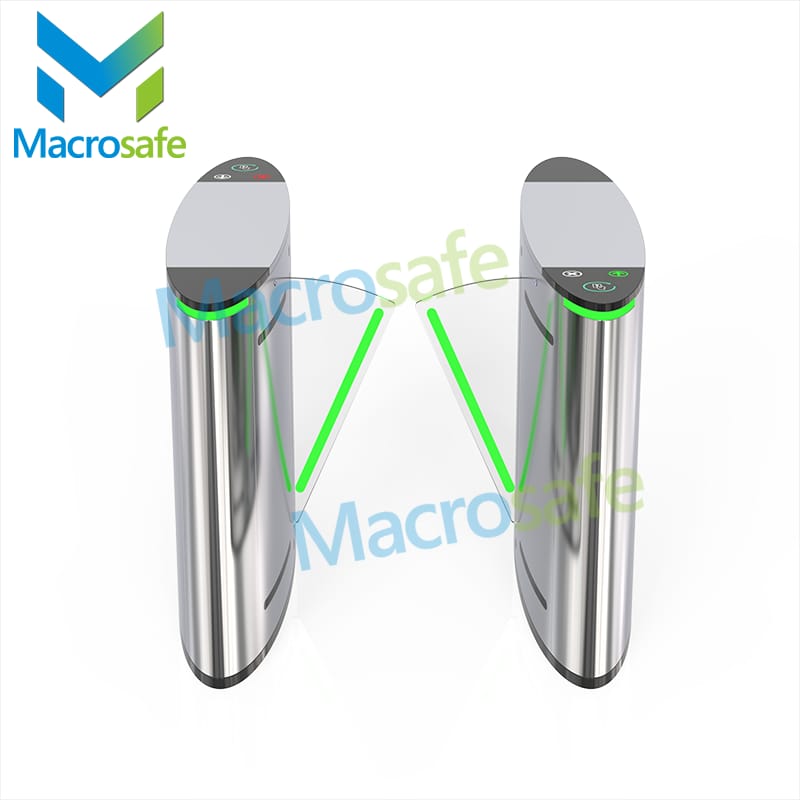Flap barrier safety solutions are an essential element in keeping facilities secure. With the rise in crime and security threats, access control systems are now more critical than ever before. Flap barriers offer high-security features, making it an ideal solution for facilities such as airports, government institutions, hospitals, corporate offices, and more.
Choosing the right flap barrier for your facility can be a daunting process, especially when there are many options to consider. Here, we will discuss the importance of using flap barriers for secure access control, types of flap barriers, installation and maintenance, and how to choose the right flap barrier for your facility.
Importance of using flap barriers for secure access control
Flap barriers provide an additional layer of security that helps prevent unauthorized access. They can be used to manage and restrict access to specific areas of a facility, such as employee-only zones, confidential data centers, and more. By integrating access control systems with flap barriers, you can enhance security, monitor traffic flow, and reduce the risk of security breaches.
Flap barriers also promote safety, preventing tailgating or piggybacking as users enter or exit the facility. By ensuring that only authorized personnel are allowed access, flap barriers can help avoid accidents and injuries.
Types of flap barriers
There are different types of flap barriers available in the market, including optical, mechanical, and biometric. Each type of barrier offers unique features that cater to different security needs and preferences.
Optical flap barriers – These barriers use infrared and optical sensors to detect and control access. They are perfect for controlling large crowds, detect unauthorized access attempts, and are more efficient in handling high traffic areas.
Mechanical flap barriers – Mechanical flap barriers don’t rely on sensors but instead use mechanical components like turnstile controller, motors and gears to facilitate access control. These barriers are known for their durability and reliability, making them an ideal choice for facilities that experience high traffic and where security is a top priority.
Biometric flap barriers – Biometric flap barriers incorporate the use of biometric identification technologies such as fingerprints, facial recognition, and iris scans to grant or restrict access. These barriers offer a high level of security, making them ideal for facilities where sensitive and confidential data is stored.
Installation and maintenance
Proper installation and maintenance of flap barriers ensure optimal performance and longevity. It’s crucial to engage the services of experienced professionals to help install and maintain your flap barriers.
During installation, the experts will ensure that the flap barriers are correctly positioned and configured to function optimally. They will also conduct functional tests to check that they are correctly functioning.
Like any other equipment, flap barriers require regular maintenance to keep them in top condition. Regular maintenance ensures that they are functioning optimally and prevents any downtime that can be costly to the facility. The maintenance may involve cleaning, lubrication, and replacement of worn-out components.
Choosing the right flap barrier for your facility
There are several factors to consider when selecting the right flap barriers for your facility, including the layout of the facility, the volume of traffic, the level of security needed, and budget constraints.
The layout of the facility – Different flap barriers have different widths, so it’s essential to consider the width of the entrances and exits where the barriers will be installed.
Volume of traffic – High volume facilities require flap barriers that can handle heavy traffic and are quick to operate.
Level of security – Facilities storing sensitive data or high-security environments require high-security flap barriers such as biometric barriers.
Budget constraints – Flap barriers come in different prices, and it’s important to consider the budget while selecting the right barrier for your facility.
Conclusion
Flap barrier safety solutions offer secure access control, which is essential in maintaining the safety and privacy of facilities. With the increasing security threats, integrating access control systems with flap barriers is a proactive approach that facilities can take to ensure the safety and security of their premises. By engaging experienced professionals for installation and maintenance and considering the layout of the facility, level of security needed, volume of traffic, and budget constraints, facility owners can choose the right flap barrier safety solutions to fit their security needs.



